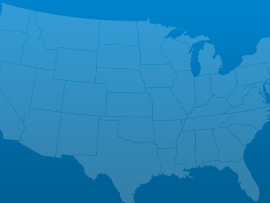Nevada’s desert climate produces extreme weather conditions for Nevada residents, most of whom live within the Washoe and Clark County urban areas. In order to effectively manage unpredictable and potentially dangerous stormwater runoff, the Clark County Regional Flood Control District is responsible for operating a capital program and implementing a Regional Master Plan and has now funded over $1.8 billion in projects and has a projected 10-year construction program (2015-25) primarily funded by sales tax revenue and bonds that will provide an estimated $666 million. Similarly, the Truckee River Flood Management Project was created, in part, to plan and design projects that help reduce the impact of flooding in the Truckee Meadows. With a total estimated cost of up to $1.6 billion, the Flood Project would be the largest public works project ever undertaken in northern Nevada. But, funding is an issue with an expected $15 - $20 million shortfall during the next 5 years. Nevada’s rural communities have their own capital improvement plans to maintain or improve their flood control systems. As an example, the town of Pahrump, initiated a $315 million program in 2008 to construct flood channels, detention basins and dams. Statewide, there continues to be projected funding shortfalls upwards of $400 million during the next 10 years.
With long-term projected budget shortfalls for flood control infrastructure, develop more secure revenue sources that can be used for bonding or to leverage federal funding.
 Aviation
Aviation Dams
Dams Drinking Water
Drinking Water Flood Control
Flood Control Schools
Schools Solid Waste
Solid Waste Transportation
Transportation Wastewater
WastewaterA: Exceptional, B: Good, C: Mediocre, D: Poor, F: Failing, ?: Incomplete
Each category was evaluated on the basis of capacity, condition, funding, future need, operation and maintenance, public safety, resilience, and innovation
Aviation
30 public-use airports
Bridges
36 of the 1,853 bridges are structurally deficient
Bridges
$10.70 million in bridge funds came from the Federal Highway Bridge Fund in 2011
Dams
85% of the state regulated dams have an Emergency Action Plan
Dams
150 high hazard dams
Drinking Water
$5.6 billion in drinking water infrastructure needs over the next 20 years
Energy
4.444 gigawatt-hours of renewable energy every year, ranking it 23rd
Hazardous Waste
1 sites on the National Priorities List
Levees
103 miles of levees
Public Parks
$18.8 million of unmet needs for its parks system
Rail
2 freight railroads covering 1,192 miles across the state, ranking 39th nationally by mileage
Roads
4,085 of the state’s 38,567 public roads are major roads, and 2% are in poor condition
Roads
$417.0 million a year in costs to motorists from driving on roads in need of repair, which is $242 /yr per motorist
Schools
$2.5 billion in estimated school infrastructure funding needs
Transit
65.1 million annual unlinked passenger trips via transit systems including bus, transit, and commuter trains
Wastewater
$2.9 billion in wastewater infrastructure needs over the next 20 years

March 03, 2017
As the President’s repeated in his address to Congress his pledge to dramatically increase infrastructure spending to the tune of $1 trillion, various Congressional Committees

March 01, 2017
On Tuesday night, President Trump addressed a joint-session of Congress for the first time in his presidency. Infrastructure was among the many issues he discussed.

February 28, 2017
U.S. motorists set a new record for vehicle miles travelled (VMT) in 2016, driving over 3.2 trillion miles, an increase of 70 billion miles from

February 17, 2017
Romantic dates, the Grammy awards and celebrating black history are not the only milestones of this week; the Oroville dam crisis in California and the